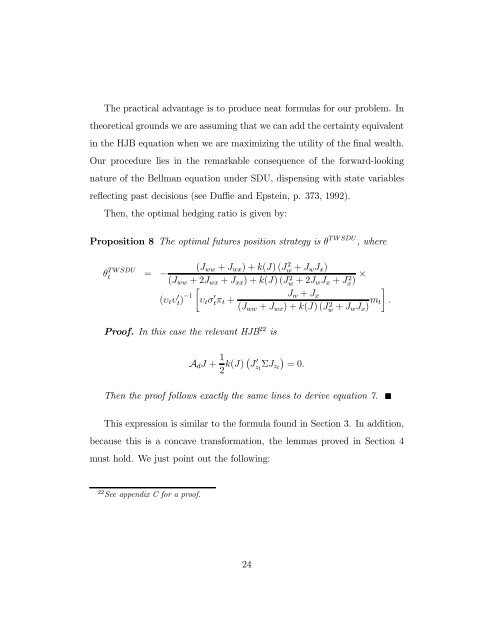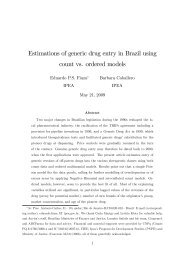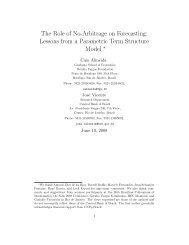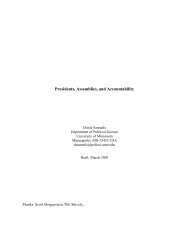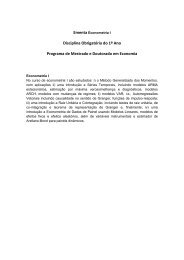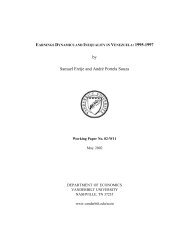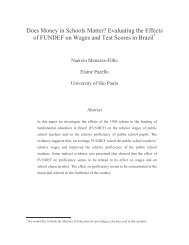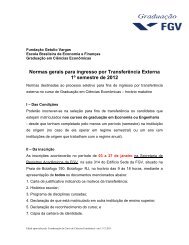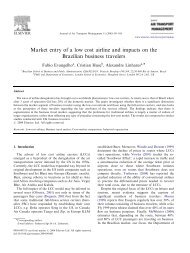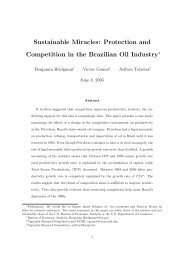Dynamic Hedging with Stochastic Differential Utility
Dynamic Hedging with Stochastic Differential Utility
Dynamic Hedging with Stochastic Differential Utility
Create successful ePaper yourself
Turn your PDF publications into a flip-book with our unique Google optimized e-Paper software.
The practical advantage is to produce neat formulas for our problem. In<br />
theoretical grounds we are assuming that we can add the certainty equivalent<br />
in the HJB equation when we are maximizing the utility of the final wealth.<br />
Our procedure lies in the remarkable consequence of the forward-looking<br />
nature of the Bellman equation under SDU, dispensing <strong>with</strong> state variables<br />
reflecting past decisions (see Duffie and Epstein, p. 373, 1992).<br />
Then, the optimal hedging ratio is given by:<br />
Proposition 8 The optimal futures position strategy is θ TWSDU , where<br />
(J ww + J wx )+k(J)(Jw 2 + J w J x )<br />
t = −<br />
(J ww +2J wx + J xx )+k(J)(Jw 2 +2J w J x + Jx) × 2<br />
θ TWSDU<br />
(υ t υ 0 t) −1 ·υ t σ 0 tπ t +<br />
J w + J x<br />
(J ww + J wx )+k(J)(J 2 w + J w J x ) m t<br />
¸<br />
.<br />
Proof. In this case the relevant HJB 22 is<br />
A d J + 1 2 k(J) ¡ J 0 z t<br />
ΣJ zt<br />
¢<br />
=0.<br />
Then the proof follows exactly the same lines to derive equation 7.<br />
This expression is similar to the formula found in Section 3. In addition,<br />
because this is a concave transformation,thelemmasprovedinSection4<br />
must hold. We just point out the following:<br />
22 See appendix C for a proof.<br />
24


